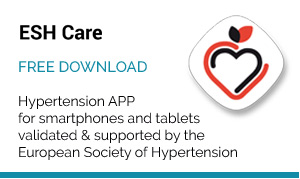Adolescent boys, but not adolescent girls, have higher systolic blood pressure in relation to visceral obesity. Stroke volume is higher in both boys and girls, while total peripheral resistance is only increased in girls with visceral obesity. The results of this analysis of the SAGUENAY Youth Study were presented by Prof. C. Syme, Nottingham, UK, at the 17th European Meeting on Hypertension, held in Milan from June 15 to June 19, 2007.
In the boys (n=135), mean visceral fat (mm3) was 1508 in the obese and 338 in the non-obese, while in the girls (n=139) these measures were 1526 and 466, respectively.
Significantly higher systolic blood pressure (SBP) and stroke volume (SV) was found in the obese boys compared to the non-obese, but there was no difference for total peripheral resistance (TPR). In the girls, SBP was not different between the obese and non-obese, while in the obese girls SV was significantly higher and TPR was significantly lower.
Heart rate was not different between the obese and non-obese boys and girls. Heart variability was not difference in the boys, but in the obese girls compared to the non-obese the HF was significantly higher and the LF/HF was significantly lower.
The investigators suggested that the difference in raised SBP may be explained by the fact that visceral obesity was associated with increased SV in both boys and girls, but in girls it was associated with a decreased TPR. TPR may be mediated by mechanisms that include changes in autonomic nervous system balance, creating a shift towards reduced sympathetic activity. Further, adolescent girls may have a more pronounced production against CV effects.






